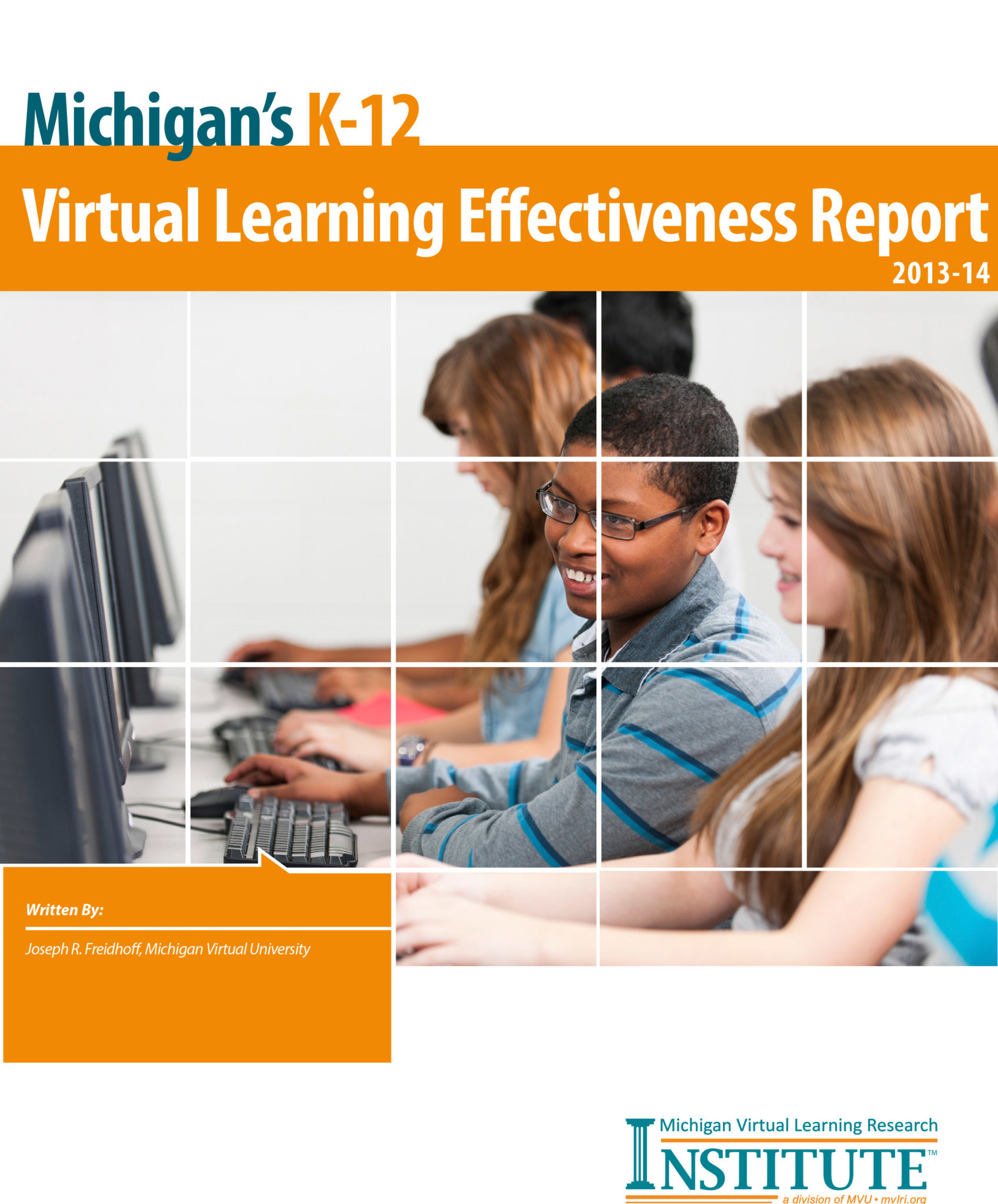Abstract
 Based on pupil completion and performance data reported by school entities to the Michigan Department of Education (MDE) or the Center for Educational Performance and Information (CEPI), this report highlights 2013-14 enrollment totals, completion rates, and the overall impact of virtual courses on K-12 pupils. Over 76,000 K-12 students took virtual courses in 2013-14, accounting for over 319,000 virtual course enrollments. Roughly seven out of 10 virtual enrollments were from non-cyber public schools through a provider other than the Michigan Virtual School. Enrollments were heaviest in the high school grades, but elementary and middle school showed large percentage increases. The percentage of virtual enrollments with a completion status of “Completed/Passed” fell from 60% to 57% compared to the prior year. Only about 2% of all K-12 enrollments in the state were delivered virtually. About 30% of Michigan schools had one or more students take a virtual course in 2013-14.
Based on pupil completion and performance data reported by school entities to the Michigan Department of Education (MDE) or the Center for Educational Performance and Information (CEPI), this report highlights 2013-14 enrollment totals, completion rates, and the overall impact of virtual courses on K-12 pupils. Over 76,000 K-12 students took virtual courses in 2013-14, accounting for over 319,000 virtual course enrollments. Roughly seven out of 10 virtual enrollments were from non-cyber public schools through a provider other than the Michigan Virtual School. Enrollments were heaviest in the high school grades, but elementary and middle school showed large percentage increases. The percentage of virtual enrollments with a completion status of “Completed/Passed” fell from 60% to 57% compared to the prior year. Only about 2% of all K-12 enrollments in the state were delivered virtually. About 30% of Michigan schools had one or more students take a virtual course in 2013-14.
Prepared By
- Joseph R. Freidhoff – Michigan Virtual
What we already know about this topic
- Previous years of the Effectiveness Report have shown increasing numbers of Michigan students taking virtual courses, more schools offering virtual learning, and a rapid increase in the number of virtual enrollments.
- At the same time, the pass rate for virtual courses has been trending down.
- Many schools have high pass rates and show evidence of successful programs — too many do not.
- Schools that have virtual learning enrollments are most likely to have 100 or more virtual enrollments.
- Students who struggle in their traditional courses, also tend to struggle when they take virtual courses.
- Students taking fewer virtual courses tended to perform better than those taking more.
- Students in poverty represent a disproportionate number of virtual enrollments and there is a sizable pass rate difference for virtual learners based on poverty status.
What this report adds
-
- This report provides updates for the 2013-14 school year on the data presented in last year’s report. In addition, a few new analyses were conducted.
Implications for practice and/or policy
-
-
- The report shows both the successes and failures of virtual learning in the state. The data presented in the report identify areas to build upon as well as practices that should be avoided.
- The data in the report provide school districts with the opportunity to benchmark their own virtual learning programs against their peers in the state. This opportunity should be an important step in a program’s continuous quality improvement activities.
-